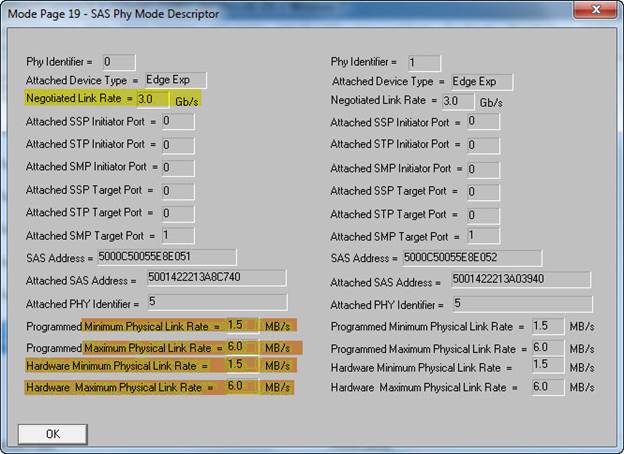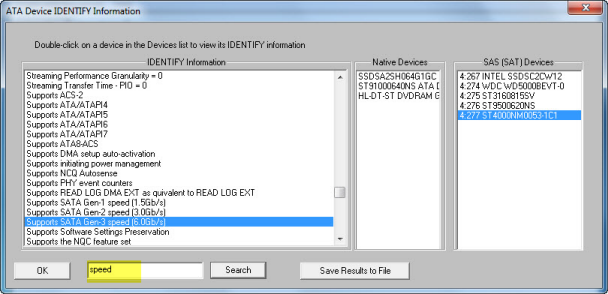In this Issue:
- Testing New Technologies (NVMe, PCIe, and more)
- Find answers you need at STBSuite.com
- Ask Dr. SCSI – Write-Cache – Things are too slow! Finding and Fixing Log Jams
- Where do you get your information? (4 question Survey – free mouse pad)
- SCSI Toolbox, LLC on LinkedIn
Testing New Technologies
Introduction
Our company, SCSI Toolbox LLC, has been in the computer peripheral testing business for 21 years. Our first product tested SCSI disk and tape drives. SCSI 1. Five MB/second maximum possible I/O rate.
We provided a “dongle” which plugged into your DOS computers parallel printer port – remember those? This dongle had a 25-pin SCSI I connector for attaching it to SCSI devices.
The race was on.
Time Marches on…
Then came SCSI 2. Then Wide SCSI. Faster and wider, from 5MB/s to 10, 20, 40, 80, 160, and finally (if you held your mouth just right) 320 MB/s, 16-bit wide parallel SCSI.
By this time the printer-port adapters had gone away, to be replaced by in-system Host Bus Adapters.
Then a new technology leap came along – Fibre Channel.
As time moved on, so did storage technologies, and so did the SCSI Toolbox. SCSI, SAS, IDE, ATA, SATA, FC, FireWire, USB and so on. As new storage interface and protocols have arrived we have kept up so our product will always work with the newest, latest, greatest.
A while back we stopped to referring to “The SCSI Toolbox” and started referring to “STB” – “The Storage Toolbox”.
Performa
Our Performa plan has provided an easy upgrade path over the years, and our product has continued to be updated and improved and to support the latest storage interfaces as they come along.
Today
What’s new as far as storage technology today? Certainly Fibre Channel, SAS, and SATA are progressing into higher and higher bandwidth and speeds. SSD drives are now common, and have their own particularities which must be taken into account in a testing environment.
And the newest interface technologies starting to appear are PCIe and NVMe interfaces. Typically these interfaces are used with SSD rather than rotating disk technology.
And the STB Suite can drive them to the max!
Here’s a screenshot showing the transfer rate (sequential read test) of an NVMe “drive”
Click here to see the screenshots of NVMe under test and the rest of the article.
Find the answers you need at STBSuite.com
Information overload?
Don’t remember what was in last month’s newsletter? Can’t find that white paper explaining how reset Grown-Defects? Looking for that SCSI or SATA Compliance guide? Know that someone had to have asked the question you have? You’re in luck! The STBSuite website is chalk full of guides, newsletters, white papers, FAQ’s, training material, sample code and much more. Using the Site Search you can quickly find answers to your questions. Try it out here!
Ask Dr. SCSI – Things are too slow! Finding and Fixing Log Jams
Q. “Dear Dr. SCSI – how can I be certain that my tests are completing as fast as they possibly can?” -I. Newton, PhD
A. “Dear Dr. Newton, as you know, we can’t break any laws of physics with the STB Suite, so we must insure that all parts of our test environment are running as fast as they possibly can. We must identify any data log-jams and correct them as efficiently and as early on in the test process as we can.”
Some potential log-jams
Mixing slow and fast hardware
If you have a mixture of slow and fast hardware in your test system, everything will slow down to match the slowest component.
For example – a 6Gb/s SAS HBA, testing 6Gb/s SAS or SATA disks, but in a 3Gb/s drive enclosure…will only run at 3Gb/s max.
Or, a 6Gb/s HBA, testing 6Gb/s disks, in a 6Gb/s enclosure, using a damaged/discarded interconnect cable – may run much slower than 6Gb/s.
How to tell?
- Check your HBA part number (via Google, etc) to see what it’s max rated speed is. Same with your drive enclosure. Your drives should be labeled as to their speed.
- Use the STB Suite to confirm your information
- To see what your SAS drive reports it can do, right-click on it in STB Original Mode, choose “Edit Mode Pages”, and look at page 0x18-SAS SSP Page. Here is an example –

This is a drive rated/labeled at 6Gb/s, but it is actually connecting at 3Gb/s, as show in the yellow highlight at the top of the page. This likely indicates that it is in a 3Gb/s enclosure, or is attached to a 3Gb/s HBA.
- To see what your SATA drive reports it can do, in STB Original Mode go to the top menu ATA/SATA->Commands->View IDENTIFY information. Select your drive from the drive list.
- Use the search function and search for “speed” here is an example of a drive which can run (maximum) at 6Gb/s –

Unfortunately at this time the SATA specification doesn’t provide a way to display what speed the drive has actually negotiated to.
Some potential log-jams – 2
Bad caching settings
The difference in write speeds with a drive set with Write Cache turned off, versus on, is amazing! An example drive tested with Write Cache OFF sustained a write transfer rate of 12 MB/s. With Write Cache turned ON that same drive sustains 125 MB/s! An order of magnitude, a 10-times speed logjam!
Checking Write Cache settings –
If you are curious to see what a drives Write Cache setting is, do the following-
Click here to see how to set the Write-Caching and read the rest of the article.
Where do you get your information? (four quick question survey – free STB mouse pad)
 We’re curious to know where our valued customers are getting their information on new products, services and industry news.
We’re curious to know where our valued customers are getting their information on new products, services and industry news.
Take this very brief media poll (four questions) and we’ll ship you a *free STBSuite mouse pad for giving us your feedback.
Thank you for being an STBSuite newsletter subscriber!
*First 100 will receive mouse pads. Valid for Contential US newsletter subscribers only.
SCSI Toolbox, LLC on LinkedIn
 We’ve recently added a LinkedIn company page.
We’ve recently added a LinkedIn company page.
If you would like to add to your skillset the STBSuite please feel free to add a link to our product page or we would love your endorsement on what SCSI Toolbox has done for you.
Our LinkedIn product page can be viewed here!


